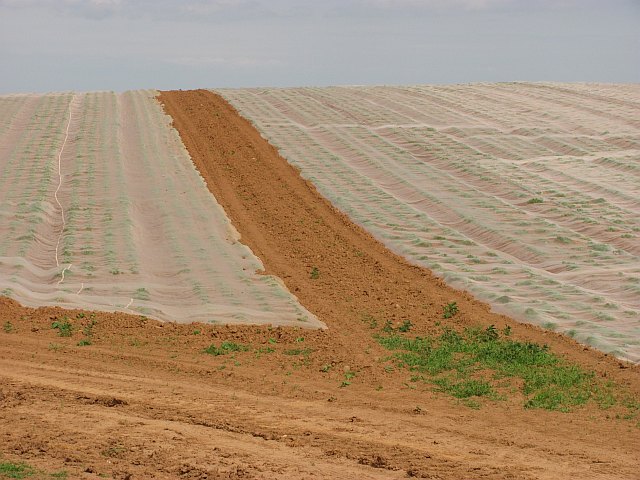Frost can be a devastating foe for farmers, posing significant risks to crop yields and agricultural productivity. One effective solution to mitigate frost damage is the use of frost protection nets. This blog post will delve into the benefits, statistics, and best practices related to frost protection nets for crops, along with relevant links for further reading.
Understanding Frost Damage
Frost occurs when temperatures drop below freezing, leading to ice crystals forming on plant tissues. This can cause various degrees of damage, from minor leaf burn to complete crop loss. According to the USDA, frost can negatively impact 10% to 50% of crops in certain regions during vulnerable periods.
Statistics on Frost Impact
- Crop Loss Estimates: The National Agricultural Statistics Service (NASS) reported that frost can lead to an estimated loss of $1 billion annually in the United States alone.
- Regions Affected: States such as California, Texas, and Florida often face frost-related challenges, with California experiencing frost damage on 15% of its crops in some years.
- Vulnerable Crops: Fruit crops, such as strawberries and peaches, are particularly susceptible, with studies showing that a single frost event can reduce yields by up to 80%.
What Are Frost Protection Nets?
Frost protection nets are specialized agricultural fabrics designed to shield crops from frost. These nets allow light and moisture to penetrate while providing a barrier against cold temperatures. Made from high-density polyethylene (HDPE) or polypropylene, these nets are lightweight, durable, and reusable.
Key Benefits of Frost Protection Nets
- Temperature Regulation: Frost protection nets can help maintain higher temperatures around plants, reducing the risk of frost damage. Research indicates that these nets can raise temperatures by up to 3°C (5.4°F) during cold nights.
- Moisture Retention: The nets can help retain soil moisture, reducing irrigation needs. A study from the University of California found that fields covered with frost nets required 30% less water.
- UV Protection: Many frost nets also provide UV protection, promoting healthier plant growth and minimizing sunburn on leaves.
- Cost-Effective: The initial investment in frost protection nets is often outweighed by the potential savings from reduced crop loss. Farmers can expect a return on investment within a few seasons.
Selecting the Right Frost Protection Net
When choosing frost protection nets, consider the following factors:
- Material: Look for high-quality HDPE or polypropylene that can withstand environmental stresses.
- Mesh Size: The mesh size determines light transmission and airflow. Smaller mesh sizes provide better frost protection but may limit air circulation.
- Color: Darker nets can absorb more heat, while lighter nets reflect sunlight, which is beneficial in warmer climates.
Popular Types of Frost Protection Nets
- Lightweight Nets: Ideal for tender seedlings and young plants.
- Heavy-Duty Nets: Suitable for mature crops requiring more protection.
- Micro-Mesh Nets: Provide excellent frost protection while allowing for air circulation and light penetration.
Installation and Best Practices
Installation Tips
- Timing: Install nets before a frost event is forecasted, typically in late fall or early spring.
- Anchor Securely: Use weights or anchors to keep the nets in place during windy conditions.
- Ventilation: Ensure nets are not in direct contact with plants to allow for air circulation, which can help prevent mold growth.
Maintenance Tips
- Regular Inspections: Check for tears or damage regularly, especially after storms.
- Cleaning: Remove debris and dirt to maintain the effectiveness of the nets.
- Proper Storage: Store nets in a dry, cool place during the off-season to prolong their lifespan.
Real-World Applications
Many farmers have successfully implemented frost protection nets, resulting in improved yields and reduced losses. For instance, a study conducted in Michigan found that orchards using frost nets experienced a 20% increase in apple yield compared to those without protection.
Case Study: Strawberry Farming
In California, strawberry farmers have reported significant benefits from using frost protection nets. A farmer noted that during a particularly harsh winter, those who employed nets saw their crop loss reduced from 50% to just 10%.
Future Trends in Frost Protection
As climate change continues to affect agricultural practices, innovations in frost protection are emerging. Researchers are exploring the integration of smart technology with frost protection nets, such as temperature sensors that can provide real-time data and alerts for farmers.
Sustainable Practices
Incorporating sustainable practices alongside frost protection nets can enhance their effectiveness. Techniques such as crop rotation and soil health management can complement the benefits of using nets, leading to a more resilient agricultural system.
Conclusion
Frost protection nets are an essential tool for farmers looking to safeguard their crops against the unpredictable nature of frost. With the potential for significant yield increases and cost savings, these nets represent a wise investment in agricultural resilience.
For more information on frost protection nets and to explore purchasing options, check out the following resources:
- University of California Agriculture and Natural Resources
- USDA – Agricultural Research Service
- The Farmer’s Almanac – Frost Dates
Frost protection nets are a vital resource for farmers, significantly reducing crop loss due to frost. By maintaining higher temperatures, retaining moisture, and providing UV protection, these nets enhance yield and ensure agricultural sustainability. For more insights on how to protect your crops from frost, dive into our detailed guide!

